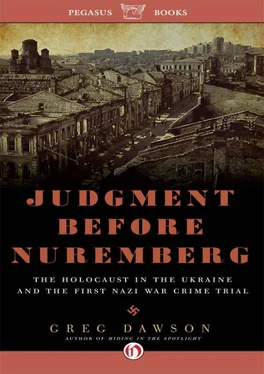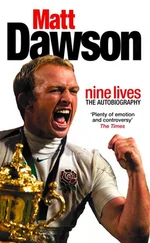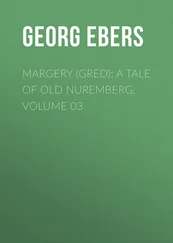History is replete with anti-Semites and their malignant vituperations. Why dwell on Luther? Because, as Hilberg shows, Luther’s anti-Semitism was not just a personality tic or the evanescent ranting of an old man that was interred with his bones. It became the philosophical foundation for the great edifice of Nazi anti-Semitism and near extermination of the Jews. “The Nazi destruction process did not come out of a void,” Hilberg wrote. “It was the culmination of a cyclical trend… The Nazis did not discard the past, they built upon it. They did not begin a development, they completed it.” [1] Raul Hilberg, The Destruction of the European Jews (Quadrangle Books/Chicago, 1961), 3–4.
And they were especially shrewd in manipulating the age-old anti-Semitism in places like Poland, Slovakia, and Ukraine.
Like most Americans, I had internalized the simplistic idea that the Holocaust did indeed “come out of a void” as a unique event, an aberration, an original cancer with shallow roots in Hitler’s hatred of the Jews, his lust for power, and a unique set of socioeconomic conditions in the 1930s which lowered the Germans’ resistance to the poisonous prescriptions of a mesmerizing megalomaniac. There was no place in that tidy view for the more disturbing idea that Hitler represented something endemic in German culture—that Nazism was a continuation of an ancient contagion.
Coming of age, the only Martin Luther on my radar screen was Martin Luther King, Jr., and I never thought about his name. Now that I know its provenance, the irony is mind-boggling. King carried the name of a man who espoused views inimical to all that he stood and died for. Like his father Martin Luther King, Sr., a Baptist minister, Martin Luther King, Jr. was born Michael King. When Michael was five, his father changed both their names in honor of the German priest he admired for his civil disobedience against Rome. The catalyst for that change elevates the story from ironic to macabre.
In 1934, Michael King joined ten other Baptist ministers on a trip to the Holy Land and Europe, including Berlin, for the Fifth Baptist World Alliance Congress. It was held at the Sportpalast, a favored venue for Hitler speeches, where the large hall was festooned with Nazi banners and Christian crosses for the Baptist event. By then, copies of About the Jews and Their Lies were being displayed in glass cases at the epic Nuremberg rallies glorified by filmmaker Leni Riefenstahl in Triumph of the Will, filmed the same year the Baptists gathered in Berlin.
It’s highly unlikely that Rev. King from Atlanta was aware of the rallies or knew of Luther’s repellent 400-year-old calumny. It was two years before Hitler would preside at the Summer Olympics in Berlin, four years before Kristallnacht shattered illusions about the Nazis once and for all. Moreover, Baptists at the Congress liked the fact that Hitler and his minions did not smoke or drink. Back home in Georgia, inspired by his visit to the homeland of Martin Luther, Michael King decided that from then on he and his son would carry the name of the great theologian. If only he had known then what most of us still don’t know today about Luther.
Hitler did. He praised Luther as one of the greatest reformers in history, and he was not referring to the priest’s crusade against indulgences in the Catholic Church. “He saw the Jew as we are only beginning to see him today,” Hitler said. Whether or not Kristallnacht —November 9–10, 1938—was actually dedicated to Luther’s birthday on November 10 as many suggest, it certainly fulfilled his marching orders to Christians four centuries earlier.
“Set fire to their synagogues or schools,” Luther had said. “Destroy their homes, confiscate all Jewish holy books, forbid rabbis to teach, force Jews to do physical labor, abolish their right to safe conduct on the highways, confiscate all Jewish money and gold so they cannot practice usury.” If necessary, Luther said, expel the Jews. “These anti-Semitic ravings were not peripheral jottings of Luther’s,” said Jewish writer Joseph Telushkin. “They became well-known throughout Germany.”
In 1895 a notorious anti-Semite, Hermann Ahlwardt, was debating a fellow Reichstag deputy who opposed his idea to expel all Jews from Germany. There are not enough Jews in Germany to cause trouble, the other deputy argued.
“Yes, gentlemen, Deputy Rickert would be right, if it were a matter of fighting with honest weapons against an honest enemy,” Ahlwardt retorted. “Then it would be a matter of course that the Germans would not fear a handful of such people. But the Jews, who operate like parasites, are a different kind of problem. Mr. Rickert, who is not as tall as I am, is afraid of a single cholera germ—and gentlemen, the Jews are cholera germs. It is the infectiousness and exploitive power of Jewry which is involved.”
Hilberg observes, “It is remarkable that two men, separated by a span of three hundred and fifty years, can still speak the same language. Ahlwardt’s picture of the Jews is in its basic features a replica of the Lutheran portrait. The Jew is still (1) an enemy who has accomplished what no external enemy has accomplished—he has driven the people of Frankfurt into the suburbs. (2) a criminal, a thug, a beast of prey who commits so many crimes that his elimination would enable the Reichstag to cut the criminal code in half. (3) a plague, or more precisely, a cholera germ. Under the Nazi regime these conceptions of the Jew were expounded and repeated in an almost endless flow of speeches, posters, letters, and memoranda.” [2] Hilberg, The Destruction of the European Jews , 17.
Julius Streicher was editor of the Nazi newspaper Der Sturmer and among the most obstreperous and vehement anti-Semites in Hitler’s inner circle. It was a proud moment for Streicher when the city of Nuremberg presented him a first edition of On the Jews and Their Lies . In 1935, he addressed the Hitler Youth about Jews.
“This people has wandered about the world for centuries and millennia, marked with the sign of Cain. Boys and girls, even if they say that the Jews were once the chosen people, do not believe it. A chosen people does not go into the world to make others work for them, to suck blood. It does not go among the people to chase the peasants from the land. It does not go among the people to make your fathers poor and drive them to despair. A chosen people does not slay and torture animals to death. Boys and girls, for you we have always suffered. For you we had to accept mockery and insult, and became fighters against the Jewish people, against that organized body of world criminals against whom already Christ had fought, the greatest anti-Semite of all times.”
Streicher probably would have put Martin Luther at No. 2—though it would have been a tough call for him between Luther and the Führer. Testifying in his trial at Nuremberg, Streicher used Luther as a sort of celebrity witness in absentia to rationalize his actions. “Dr. Martin Luther would very probably sit in my place in the defendants’ dock today, if this book ( On the Jews and Their Lies ) had been taken into consideration by the prosecution.”
A prominent Anglican cleric and writer, Rev. William Ralph Inge, made the same argument from outside the dock in 1944. “If you wish to find a scapegoat on whose shoulders we may lay the miseries which Germany has brought upon the world, I am more and more convinced that the worst evil genius of that country is not Hitler or Bismarck or Frederick the Great, but Martin Luther.” [3] Emily Paras, “The Darker Side of Martin Luther,” Digital-Commons@IWU (2008), 1.
After the war the memory of the “worst evil genius” and his seminal screed against the Jews vanished from public consciousness like the SS officers and death camp guards who escaped capture and melted into anonymity in places like Brazil and Cleveland. Some eventually were brought to justice; not so the muse of their unprecedented crimes.
Читать дальше












